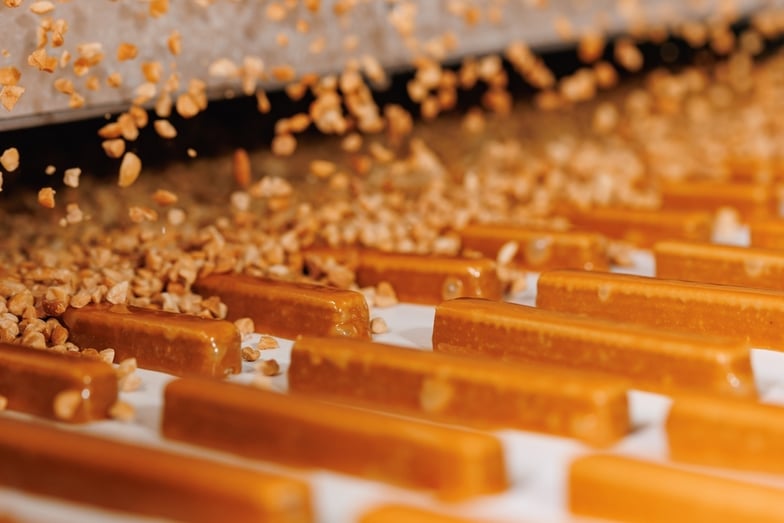
Food & Beverage Manufacturing Industry Statistics: GDP, Exports & Jobs
|
Food & Beverage
|
Blogs
Posted By:
Federico Fontanella, PMP
The food and beverage manufacturing industry—often referred to as food and beverage processing—encompasses the transformation of raw agricultural products like milk, grains, fruits, and livestock into consumable goods such as cheese, bread, packaged foods, beer, and soft drinks. Unlike agricultural production, which focuses on growing or raising raw materials, this industry adds value by processing those inputs into finished products ready for distribution and consumption.
As one of the largest components of U.S. manufacturing, food and beverage processing plays a critical role in both the economy and daily life, contributing significantly to GDP and employment while supporting broader supply chains from farming and logistics to retail and hospitality.
The sections below provide an overview of the industry’s broad economic impact, but first here are some of the most important key facts about food and beverage manufacturing based on the most recent annual data.
Key Industry Facts
-
Total annual economic output: $1.1 trillion (2023)
-
Total annual GDP: $278 billion (2023)
-
Food & beverage manufacturing share of U.S. GDP: 1.0% (2023)
-
Total annual exports: $93.7 billion (2024)
-
Total employment: 2,090,743 (2024)
-
Total number of firms: 58,586 (2024)
Food & Beverage Manufacturing GDP & Growth
From 1997 to 2023, the inflation-adjusted GDP for the combined food and beverage manufacturing sector grew moderately—from about $207 billion in 1997 to around $278 billion in 2023—with food manufacturing consistently making up nearly four times the value of beverage manufacturing. Despite this growth in absolute terms, the sector’s share of total U.S. GDP has remained quite stable or slightly declined, hovering mostly between 1–1.2% in the late 1990s and steadily trending downward to around 0.8–1% in recent years. Within the sector, animal and poultry processing dominate gross output by a wide margin, followed by sizable but distinctly smaller segments such as cheese, milk & butter, bakery products, oilseed processing, and soft drinks.
Gross Domestic Product (Value Added) by Year
Share of U.S. GDP by Year
SMARTER PRODUCT DEVELOPMENT STARTS HERE
As food and beverage manufacturing grows more complex, efficient product development is critical. Discover how leading brands streamline innovation and compliance with our PLM software for food and beverage—a powerful solution built to manage formulation, labeling, and sourcing in one platform.
Top Food & Beverage Manufacturing Sectors by Output
Food & Beverage Manufacturing Export Volume
U.S. food and beverage manufacturing exports have grown in nominal terms from $57.2 billion in 2010 to $93.7 billion in 2024, but after adjusting for inflation, exports have been relatively flat since 2014, hovering near $94–105 billion per year. In 2024, meat products and packaging lead all sub-sectors by a wide margin, with nearly $28 billion in exports—more than double the next category, starch and vegetable fats & oils at $11.8 billion. The export market is concentrated among nearby trading partners, with Canada and Mexico together accounting for almost $39.4 billion, or over 40% of total exports, while the next largest markets (Japan, China, South Korea) each account for roughly $5–6 billion. Thus, export growth is highly dependent on North American demand and led by high-value animal and fat products.
Total Exports by Year
Annual Exports by Sector
Annual Exports by Country
Food & Beverage Manufacturing Employment & Wages
From 2014 to late 2024, total U.S. food and beverage manufacturing employment steadily increased from about 1.6 million to over 2.1 million, a roughly 30% rise, with only a brief dip in 2020 during the pandemic. Average weekly wages in food manufacturing climbed sharply over the decade from around $850 to $1,230 per week (about 45%), while beverage manufacturing increased more slowly from $1,040 to $1,155 per week (~11%).
California leads states in total sector employment by a wide margin (over 230,000 workers in 2024 Q4), while other top states include Texas, Illinois, and Pennsylvania. Looking at regional employment concentrations, states like Arkansas, Iowa, and Nebraska are especially specialized in food manufacturing (over triple the national rate), while Vermont, Kentucky, and Oregon stand out for beverage manufacturing, indicating that food plants tend to cluster in agricultural states and beverage facilities often cluster in smaller or specific markets, very different from the food sector’s geographic footprint.
National Employment Trends
TAKE CONTROL OF YOUR PRODUCT JOURNEY
Want to cut costs, speed up time to market, and stay compliant across the board? Learn how product lifecycle management software helps food and beverage brands manage products from concept to shelf—all while boosting collaboration and reducing risk.
National Wage Trends
Total Food & Beverage Manufacturing Employment by State
Employment Concentrations by State
Data Sources
- U.S. Bureau of Economic Analysis. GDP by Industry. Available at: https://www.bea.gov/data/gdp/gdp-industry.
- U.S. Bureau of Labor Statistics. Quarterly Census of Employment and Wages (QCEW). Available at: https://www.bls.gov/cew/.
- U.S. Bureau of Labor Statistics. Occupational Employment and Wage Statistics (OEWS). Available at: https://www.bls.gov/oes/.
- U.S. Census Bureau. USA Trade Online. Available at: https://usatrade.census.gov/.

